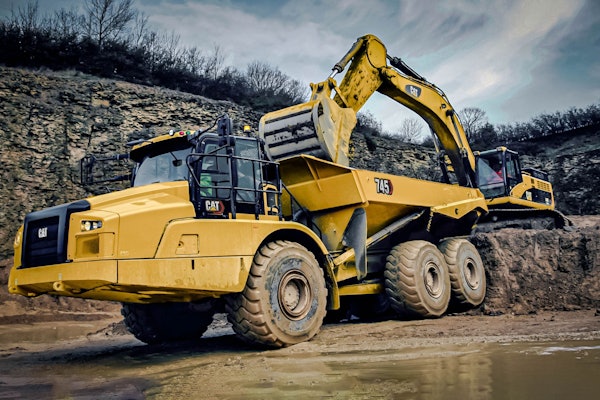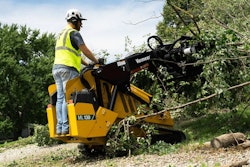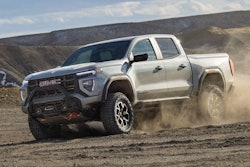Mitsubishi Fuso’s 2008 cabover truck lineup includes six new models offering significant changes in the cabs, brake systems and emissions control.
On the small end of the scale the company is getting back into the Class 3 medium-duty market for the first time since 2005 with the FE125. With its 12,500-pound GVW rating, the FE125 comes in three wheelbases: 114.6 inches, 134.3 inches and 152.4 inches. A 4.9-liter double overhead cam engine with four valves per cylinder moves the truck with 185 horsepower and 391 foot-pounds of torque. Stopping ability comes from power-assisted hydraulic dual caliper disc brakes. The transmission is an Aisin electronic model, automatic with six speeds and overdrive. Also new for this size truck is a PTO with programmable speeds.
The same engine, transmission, frame style and wheelbases are found on the new Class 4 entry, the FE145, which weighs in at 14,500 pounds. The FE145 also gets a new 176-inch wheelbase option providing enough room for 20-foot bodies and accepting most brands of tuck-under lift gates. A switch-able on-off exhaust brake boosts stopping power when needed.
The new 17,995-pound Class 5 model, the FE180 retains the same engine as the previously mentioned trucks, but you have an option of the Aisin or a Mitsubishi 6-speed manual transmission. The FE180 can be spec’ed with same length wheelbases as the FE145 plus a new 189.4-inch size that will accommodate 22-foot bodies and some tuck-under lift gates. The FE180 models sport a 34.4-inch high frame.
Rear stabilizer bars were significant in enabling the company to take this Class 5 offering as well as the Class 6 models into bigger body sizes, says Robert Aquaro, vice president of quality assurance.
Stepping up to Class 6 and 19,850 pounds, the FK200 boasts an Allison 1000 RDS electronic five-speed transmission and what the company calls a “completely rebuildable” 7.5-liter single overhead cam engine with four valves per cylinder and 243 horsepower with 514 foot-pounds of torque. The 36-inch-high frame is formed from 51,200-psi yield strength steel with an RBM per rail of 530,994 inch-pounds. It’s available in three wheelbase lengths and accommodates bodies up to 24-feet long.
The new FK260 jumps up to a 25,995-pound GVWR and uses the same engine and transmission but a Mitsubishi six-speed manual transmission is also available as an option. Full air brakes provided plenty of stopping power and an exhaust brake comes as standard equipment. The FK260 also comes in two configurations: standard suspension or air suspension.
The heavyweight of the bunch, the Class 7 FM330 model puts power to the wheels with the same engine and transmission options as the FK260 but comes in with a GVWR of 32,900 pounds. It’s available in four wheelbase lengths and accepts bodies from 16- to 28-feet long.
The company increased cab interior space and headroom and made air conditioning standard from the factory. For easy body installations the trucks all offer 33.1-inch-wide, straight-channel ladder frames.
To give the normally front-heavy cabover design better front axle loading and balance the engine position was pushed back 44 millimeters and raised 23 millimeters. An optional 24-gallon auxiliary fuel tank is also available to bring fuel capacity up to 57 gallons on FE models and 100 gallons on the larger trucks. “This helps customers who need to shop around for better fuel prices, and some customers asked for longer range vehicles.” Aquaro says.
All the new trucks enjoy an upgraded electronics program. PTO speeds can be programmed by your dealer, as can top speeds and cruise control speeds on models with automatic transmissions.
As with all new diesel trucks the Mitsubishi Fuso models now have a diesel particulate filter in place of a muffler. These are required to reduce exhaust emissions as of 2007. But the company chose silicon carbide (rather than cordolite, which most other manufacturers use) for the material inside the DPF that oxidizes particulate matter. Although more expensive, the silicon carbide is more efficient at removing particulate matter and more fuel efficient, Aquaro says. It also enabled them to make the DPF smaller and lighter than competitive models.










